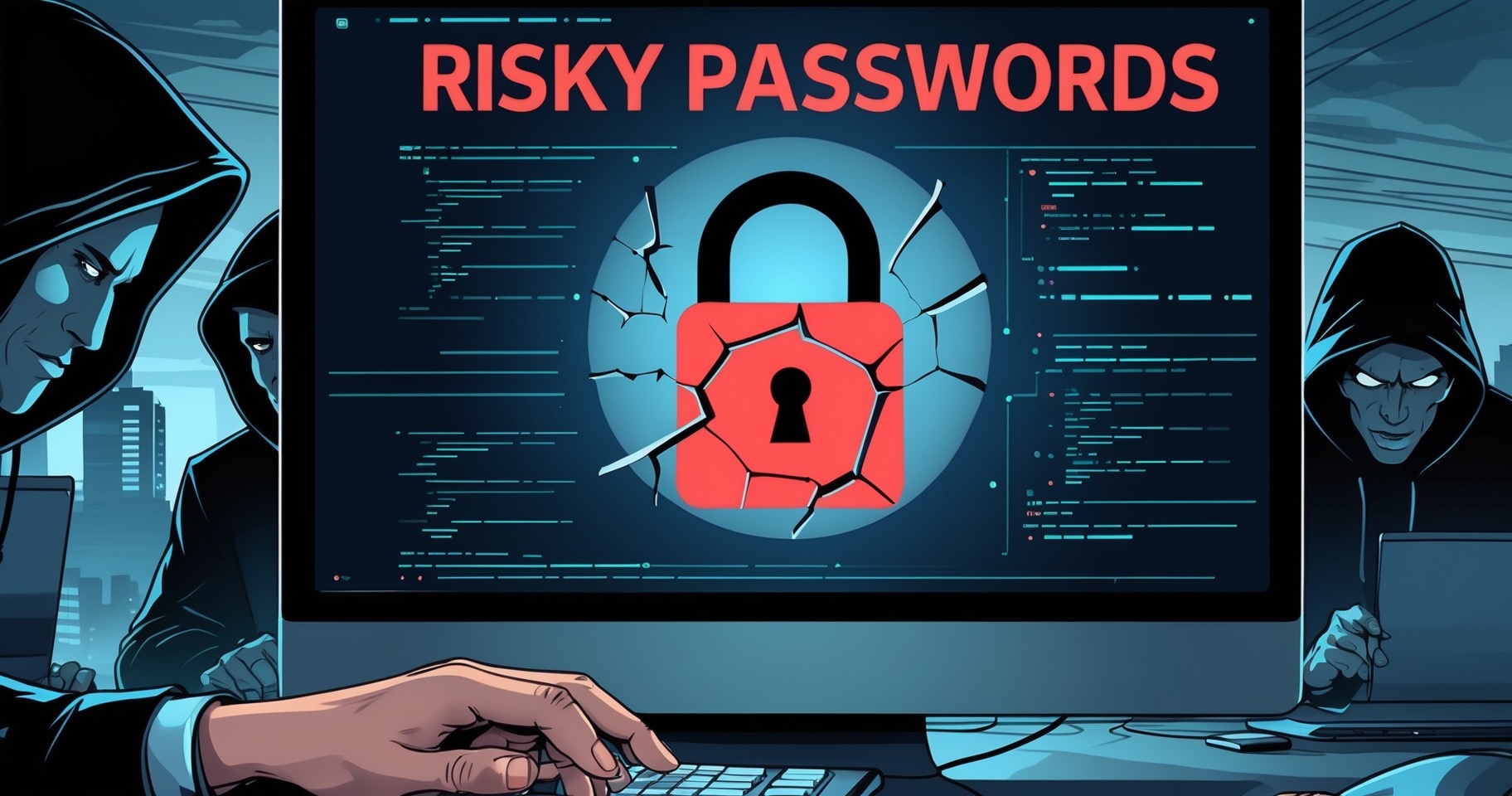You wouldn’t leave your front door wide open overnight, but what if someone left the back window unlocked?
That’s the reality facing many businesses today.
They invest in cyber defences like firewalls, antivirus tools, and encrypted systems, only to overlook a critical vulnerability: their own employees.
And just like that open window, it only takes a small gap for everything to come undone.
In the race to secure networks, devices, and data, it’s easy to miss the human element.
But if you’re serious about digital security, it’s time to confront the blind spot that’s hiding in plain sight: your people.
This article explores why employees are often your biggest cybersecurity risk, the everyday behaviours that increase exposure, and most importantly, how to turn your staff into your first line of defence.
Whether you’re a business owner, IT lead, or employee yourself, understanding the human factor is essential to closing your security gaps before they become open doors.
Why Employees Are Often Your Biggest Cybersecurity Risk
You can have the most advanced security infrastructure in place, but one careless click or overlooked update can undo it all.
When it comes to cyber threats, technology might be bulletproof, but people rarely are.
Even the most loyal, well-meaning employees can unintentionally become security liabilities. It’s not about blame; it’s about closing the awareness gap.
1. Human Error Trumps Technology
The numbers don’t lie. According to a report by IBM, over 74% of cybersecurity incidents involve some form of human error. That includes:
- Clicking on phishing emails
- Using the same password across multiple accounts
- Failing to update software or apps
- Falling for social engineering scams
It’s easy to assume only “careless” people make these mistakes. But in truth, everyone is vulnerable, especially when they’re busy, distracted, or under pressure to deliver.
2. The Rise of BYOD (Bring Your Own Device)
Remote work has reshaped the modern workplace, and with it, the line between personal and professional devices has blurred.
Employees often access company data from their personal laptops, tablets, or smartphones, which might be:
- Running outdated operating systems
- Lacking proper antivirus software
- Connected to unsecured Wi-Fi networks
- Shared with family members or others
This BYOD culture offers convenience, but from a cybersecurity standpoint, it’s a ticking time bomb.
3. Convenience Over Compliance
Let’s be honest, most people prioritise productivity over protocols. When deadlines loom or systems feel clunky, employees find workarounds that unintentionally bypass security measures.
Common behaviours include:
- Forwarding work emails to personal accounts
- Saving sensitive files to desktops or USB drives
- Using unauthorised tools like ChatGPT or AI assistants for client data
- Turning personal phones into mobile hotspots
These shortcuts are rarely malicious, but they open the door to serious risks if left unchecked. Now let’s explore some common employee actions that can cause cybersecurity disasters.
Common Employee Behaviours That Create Risk
Most cyber threats don’t start with a hacker breaking through firewalls; they begin with everyday employee habits.
These small, routine actions may seem harmless on the surface, but can leave businesses dangerously exposed.
Let’s break down the most common behaviours that compromise cybersecurity in the workplace.
1. Weak & Reused Passwords
This one tops nearly every cybersecurity risk list, and for good reason.
Despite years of warnings, many employees still use weak, predictable passwords like “123456” or “password1”. Even more concerning, a recent study found that:
- 48% of employees reuse passwords across multiple work accounts
- 34% use the same passwords for both personal and work logins
Why does this matter?
If just one account is compromised, a hacker can use the same credentials to access sensitive business systems, from email platforms to cloud storage.
2. Unsafe Networks & Devices
It’s not just what employees access, it’s where and how they do it.
- Connecting to public Wi-Fi at cafés, airports or hotels without protection
- Using personal devices that lack security software or patches
- Relying on shared family devices where others may accidentally access work data
These habits expose businesses to risks like Man-in-the-Middle attacks, malware injections, and unauthorised access to internal systems.
3. Mishandling Sensitive Data
Whether it’s convenience or a lack of understanding, employees often move sensitive data outside secure environments without realising the risks.
Examples include:
- Downloading customer or financial data onto personal laptops
- Emailing work documents to Gmail or other private accounts
- Copying files onto unencrypted USBs
- Using unsanctioned AI tools to summarise or generate content based on client data
This is what’s known as Shadow IT, when technology and software are used without the knowledge or approval of the IT team.
It creates major blind spots for organisations trying to monitor data flow and compliance.
So, you can clearly see that it’s not wise to avoid the employee side of cybersecurity. And if you still do see what you’re setting yourself up against.
The Consequences of Ignoring the Human Factor
Even with the most advanced firewalls, AI-driven detection, and endpoint protection, neglecting the human element in cybersecurity leaves organisations vulnerable.
Human error can undermine technical safeguards, creating opportunities for breaches that carry serious consequences.
Here are seven critical risks of overlooking employee behaviour in your cybersecurity strategy:
- Data Breaches: Employee mistakes can lead to unauthorised access or disclosure of sensitive information, compromising confidential data.
- Financial Loss: The cost of responding to and recovering from cyber incidents, including remediation, penalties, and lost business, can be substantial.
- Legal and Regulatory Penalties: Failure to comply with data protection laws and industry regulations due to employee-related lapses can result in fines, legal action, or sanctions.
- Reputational Damage: Cyber incidents harm customer trust and brand reputation, sometimes causing long-term damage that affects market position and stakeholder confidence.
- Operational Disruption: Cybersecurity incidents triggered by human error can disrupt daily operations, causing downtime and loss of productivity.
- Compliance Failures: Inadequate staff training or oversight can lead to breaches of frameworks such as APRA, the Notifiable Data Breaches (NDB) scheme, or the Consumer Data Right (CDR). Australian organisations handling EU data may also be subject to the GDPR.
- Increased Vulnerability: Ignoring the human factor perpetuates security gaps, allowing threats to exploit weak points and escalate risks across the organisation.
Addressing these risks requires a holistic approach that integrates technology with comprehensive employee awareness, training, and accountability measures.
Without this balance, even the strongest technical defences may fail to protect critical assets effectively.
Turning Employees into Cybersecurity Champions
Cybersecurity isn’t just the responsibility of the IT department, it’s a shared effort that starts with awareness and is reinforced by everyday actions. Employees across all levels can play a key role in keeping the organisation secure.
With the right mindset and support, anyone can become a cybersecurity champion.
Here are practical ways staff can lead by example and build a culture of security:
- Stay alert to threats: Pay attention to unexpected emails, links, or requests. If something feels off, report it straight away, no second-guessing.
- Use strong, unique passwords: Avoid reusing passwords across platforms. Instead, use a password manager to generate and store secure logins.
- Secure your devices: Keep personal and work devices updated, use antivirus software, and enable multi-factor authentication.
- Follow approved tools and platforms: Resist the urge to download unvetted apps or use personal drives for work tasks, it’s not worth the risk.
- Encourage open conversations: Ask questions if something is unclear and offer feedback on security processes that don’t align with workflows.
- Lead by example: Volunteer as a cybersecurity contact or “champion” for your team to share updates and reinforce good habits.
By recognising risks and responding proactively, employees transform from potential vulnerabilities into the strongest line of defence.
A cyber-smart culture isn’t built on fear; it’s built on trust, education, and shared responsibility.
Because when everyone plays their part, everyone is protected.
Final Thoughts: Close the Gap Before It’s Too Late
You can invest in the best cybersecurity tools money can buy, firewalls, encryption, threat detection software, but if your team isn’t properly trained, your defences are only as strong as your weakest link.
And here’s the reality: employees aren’t the problem. Ignoring employee behaviour is.
Every team member who clicks a suspicious link, reuses a password, or downloads sensitive data to a personal device could unknowingly be opening the digital equivalent of a back door.
But with the right training, tools, and culture, those same employees can become your most valuable line of defence.
It’s not about turning everyone into tech experts.
It’s about helping people make smarter, safer decisions every day.
So before you roll out your next security update or compliance policy, ask yourself: Are you addressing the human element?
Close the blind spot. Build a culture. Protect what matters.
To tighten your cybersecurity call 1300 887 889 or book a free consultation with us!








